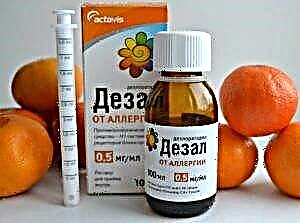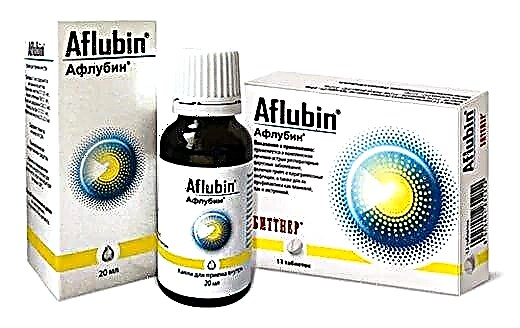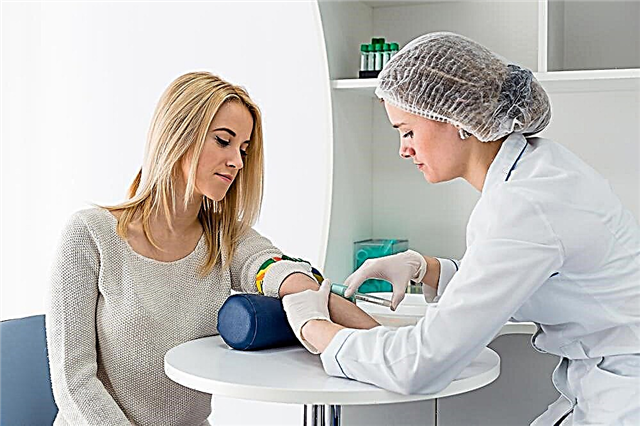
Everyone understands that without a normal healthy liver, a person cannot fully exist. That is why parents have many questions regarding the increased size of this organ in children. Read this article to learn what to do if your child has an enlarged liver.

Liver size - normal
The size of the liver is usually determined by three parameters: on the right along the areola line, on the left along the oblique line and along the midline of the chest. How the lines pass can be seen in the figure. Normal liver sizes in a healthy child are:
- Up to 3 years - on the right along the areola line - 5 cm, along the midline - 4 centimeters, and on the left oblique line - no more than 3 centimeters.
- Up to 7 years - on the right along the areola line - no more than 6 centimeters, along the median sternal line - 5 centimeters, on the left oblique - no more than 4 centimeters.
- Up to 12 years old - on the right along the areola line - no more than 8 centimeters, along the midline - 7 centimeters, on the left oblique - 6 centimeters.
- Older than 12 years old - on the right along the areola line - 10 centimeters, along the midline - 9 centimeters, on the oblique left line - 8 centimeters.

In a healthy child, a normal liver should not be enlarged. Also, it should not go beyond the costal arch.
The exception is newborns and children who are not yet 1 year old. In them, such an exit beyond the costal arch can be a completely normal physiological phenomenon if the exit does not exceed 2 centimeters.
In children 5-6 years old, the exit of the liver beyond the costal arch may also be present, however, it should not normally exceed 1 centimeter. Any deviations from the above norms are considered an increase in the liver and may indicate possible pathologies.

What do the deviations mean?
An enlarged liver is not an independent disease, but only a symptom of a disease. The symptom itself is called hepatomegaly in medicine. Not every increase should be considered a warning sign. If the child is not yet seven years old, if his size is slightly increased, doctors do not consider such a condition requiring medical intervention.
If the size of the liver is significantly enlarged or hepatomegaly is first detected after the age of seven, this symptom will be regarded as pathological, and all the efforts of the doctor will be directed towards finding the true cause of the enlarged liver.

A vital organ can "grow" in size due to congenital pathologies:
- intrauterine infections;
- viral diseases that affected the fetus during pregnancy (primarily rubella, toxoplasmosis and cytomegalovirus);
- congenital absence or infection of the bile ducts (arthresia);
- diseases of the cardiovascular system, in the course of which one or another degree of heart failure develops;
- hemolytic disease that occurred to the fetus during pregnancy due to Rh-conflict with the mother, as well as a disease that "started" after the birth of a child for the same reason (usually happens with Rh-positive babies born of Rh-negative mothers );
- numerous cysts;
- hereditary diseases of the blood circulation and blood vessels, in which the vessels pathologically dilate, which is accompanied by spontaneous bleeding.


The liver may enlarge for other reasons that are not congenital:
- Infectious mononucleosis;
- viral hepatitis;
- severe toxic poisoning with poisons or chemicals;
- inflammation of the gallbladder;
- tuberculosis;
- syphilis;
- obesity and metabolic diseases;
- diabetes;
- oncological diseases and blood diseases (lymphoma, leukemia, etc.).
An increase in the size of the liver can result violation of the principle of balanced baby food, especially if carbohydrates and fats predominate in the baby's diet, and proteins are not enough. If the pathology has congenital causes, then it is usually possible to establish it even in the first year of the baby's life, because the pediatrician on examination cannot fail to notice the excess of the liver on palpation. Acquired pathological changes are usually diagnosed later, closer to 5-7 years.

Since the list of possible causes is extremely wide, it is better not to try to find out the true one yourself.
Hepatomegaly is a syndrome that cannot be ignored, because not only the health of the baby in the future, but also his life depends on how quickly and correctly the child will be provided with qualified assistance.
Signs of pathology
It is clear that parents cannot measure the baby's liver on their own in order to understand if he has any deviations from the norm. But any mother can suspect something was wrong due to a number of signs that indirectly may indicate liver problems:
- the child often complains of heaviness in the abdomen, while the upper abdomen on the right is somewhat painful when pressed lightly with the hand;
- the skin has a yellow or yellowish tint, the eyeballs turn yellow;
- the baby has problems with nutrition - lack of appetite, nausea and vomiting, instability of the stool, frequent diarrhea;
- feces become very light, sometimes almost white, and urine, on the contrary, darkens;
- lingering jaundice of newborns (if more than two weeks have passed since discharge from the hospital, and the child still remains yellow, this is a reason to check the liver);
- characteristic bitter odor from the mouth (not a mandatory sign!).


Where to contact?
If parents suspect a child has liver problems, you should definitely visit a pediatrician with your child. Of course, such a specialist as a hepatologist will be able to understand the problem much faster, but there are not so many doctors of such a rare and narrow specialization in Russia, and they are not accepted in every polyclinic.
If there is an opportunity to visit such a doctor, then it is better to do it. If there is no hepatologist, a pediatrician and gastroenterologist will help. In such a duet, two specialists will surely find pathological causes, if any, and will be able to prescribe adequate treatment. It is strictly forbidden to delay the beginning of the examination. Any malfunction in the liver, and an increase is also considered a malfunction, increase the likelihood of intoxication. After all, the natural, by nature created "filter" of the body - the liver - does not fully work.
Usually, an experienced pediatrician can determine whether a child's liver and spleen are enlarged with the help of his hands - by palpating and tapping the area of the liver. Suspicions are confirmed by ultrasound diagnostics.
On ultrasound, you can see not only the exact dimensions of the liver (up to millimeters), but also possible changes in its tissues, violations in the right or left lobe.


If the diagnostician indicates an increase, then the pediatrician will prescribe the child a general blood test, urinalysis, fecal analysis for parasite eggs and bile, biochemical laboratory blood tests, computed tomography, less often - MRI. If tumors and neoplasms are found, the child is hospitalized in order to take liver tissue samples for biopsy under anesthesia using a laparoscope.
Treatment
For children under 7-8 years old, a slight increase in the liver (a little more than 2 centimeters) is corrected with the help of medications. Surgical intervention is permissible only in the case of gross and severe liver lesions of a congenital nature associated with structural abnormalities. Treatment always begins with the treatment of the underlying disease. If a viral infection is to blame for everything, the child can be hospitalized and, in stationary conditions, puncture him with a course of effective antiviral drugs (Tamiflu). At home, such drugs are not prescribed, but antiviral drugs available to everyone from the pharmacy ("Anaferon" and others) are not considered officially effective and influencing the course of a viral infection.


Bacterial infections or diseases with associated inflammatory processes are usually treated with antibiotics, choosing the least severe, so as not to exert additional drug "pressure" on the liver. Metabolic diseases are treated by an endocrinologist with the use of special drugs that improve and normalize metabolic processes. Simultaneously with the treatment of the underlying disease, a child with an enlarged liver is prescribed special hepatoprotective therapy. It includes funds whose task is to support an already suffering liver during a drug load.
Usually, medications are present in liver maintenance therapy such as Essentiale, "No-shpa", Carsil, "Heptral" and Duspatalin... Among the hepatoprotectors most often prescribed in childhood, it can be noted "Galstenu", "Ursosan", Cholenzym.
In order for the child's body to work better, in the course of treatment, drugs are prescribed containing important enzymes, which may, due to pathology, be produced in insufficient quantities. These drugs include "Creon", "Mezim".

It is not worth taking enzymes for too long, so as not to "spoil" the child's body. Otherwise, he will reduce the production of his own enzymes to nothing, which then will lead to very disastrous consequences.
A child, regardless of the cause that led to hepatic enlargement, a special diet is prescribed... Fatty foods are completely removed from the child's menu for a long time - butter, lard, cheeses with a high percentage of fat, fat milk and sour cream. A kid with hepatomegaly is strictly prohibited from cocoa, chocolate, eggs, mushrooms, nuts, fatty meats, sour drinks, including fruit juices, canned food and smoked meats, spices and even ice cream. It is very important to stick to the diet, otherwise the treatment may be ineffective, despite taking the prescribed drugs. The child needs lean meats, vegetables, steamed and baked food. Fried and fresh baked goods should be avoided. You need to eat fractionally, at least 5 times a day in small portions.

No doctor will give forecasts for the treatment of an enlarged liver in advance, because a lot affects the outcome of the pathology - both the underlying disease, and the state of the baby's immunity, and the degree of enlargement of the liver itself. However, timely treatment and promptly started treatment, according to the statistics of the Ministry of Health for 2016, provide a favorable prognosis in more than 90% of cases.
It is most difficult to predict an increase in baking if it is caused by toxic poisoning, as well as complicated by the onset of cirrhosis. Such problems are much less responsive to therapy, but even here a positive outcome is estimated at more than 60%.
Prevention recommendations
A mother can save her child from liver problems even at the stage of pregnancy. If she is attentive to her health, to protect herself from infections, viruses, then the chances of pathological changes in the laying and functioning of the digestive organs in the baby's body will be minimal.

A child of 2 years old, like a child of 3-4 years and older, should not have an abundance of fatty and carbohydrate foods on the table, especially with a sedentary lifestyle. The obesity of the liver can also lead to a passion for fast food at an older age - at 8-10 years old, and this will be quite dangerous, since such an increase will never be considered physiological. One advice - you need to be careful about the nutrition of the child.


Prevention also includes precautions that parents must take when storing toxic substances at home that they need in everyday life. Free access can cause severe poisoning in a child with irreversible changes in the liver.
Quite often, parents, on the advice of friends and relatives, take and give their children “to cleanse the liver” some decoctions, tablets and powders. Now a big and profitable business is built on such pseudo-drugs. No decoctions and pills should be given to a child to prevent liver problems.! If you have problems, you need to go to the doctor. If not - enough healthy food, active leisure, sports, so that nothing "clean" is needed.
See the following tutorial video for all about liver size.



